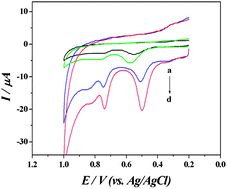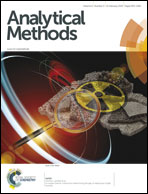Sensitive electrochemical determination of promethazine hydrochloride based on the poly(p-aminobenzene sulfonic acid)/flowerlike ZnO crystals composite film
Abstract
ZnO crystals were synthesized by a hydrothermal decomposition process in the presence of poly(vinylpyrrolidone) as the surfactant, then characterized by scanning electron microscopy and X-ray diffraction. The composites of flowerlike ZnO combined with poly(p-aminobenzene sulfonic acid) (p-ABSA) were immobilized on a glassy carbon electrode for constructing a sensitive electrochemical sensor. The electrocatalytic response to PHZ on the prepared sensor was measured using cyclic voltammetry and differential pulse voltammetry (DPV) in PBS buffer (pH 8.0). The fabricated sensor was successfully used for the detection of promethazine hydrochloride (PHZ) in a 0.10 M phosphate buffer solution (PBS) at pH 8.0. Under optimal conditions, the linear concentration range of PHZ obtained at p-ABSA/ZnO composite film using DPV technique was 0.01 μM to 59.84 μM (R = 0.997) and the detection limit was 0.004 μM at S/N = 3. Furthermore, the prepared sensor displayed voltammetric responses with excellent reproducibility, high sensitivity and stability for PHZ. Therefore, the p-ABSA/ZnO composite film has become a promising application for quantitative determination of PHZ.


 Please wait while we load your content...
Please wait while we load your content...